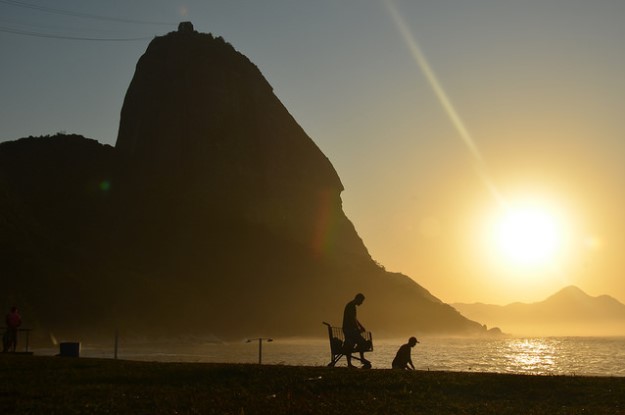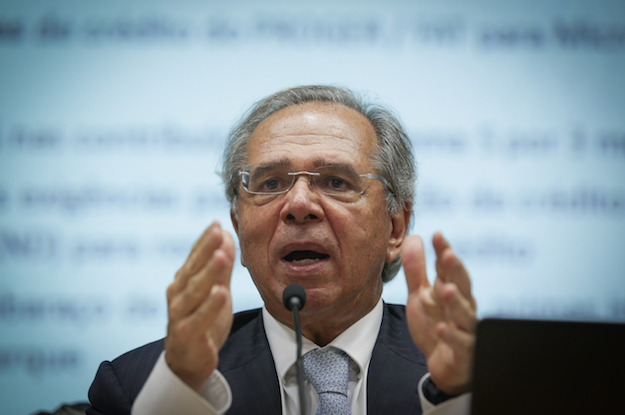Now might seem like an odd time to look for signs of hope in Brazil. Dilma Rousseff has an approval rating of just 10 percent, she faces possible impeachment proceedings, scandal has frozen activity at the country’s biggest companies, inflation runs around 10 percent and the economy is expected to shrink 3 percent this year.
Yet, amid all the gloom, we’ve also recently begun to see tentative hints of what a recovery might look like.
The latest Focus survey of economists by Brazil’s central bank indicates that, while inflation will end this year at high levels, expectations are stabilizing at about 9.7 percent. More importantly, economists expect inflation to slow next year to 6.1 percent – still high, but under the central bank’s 6.5 percent target ceiling. This is critical, since inflation expectations had been rising non-stop for months. Brazilian voters historically tend to be even more upset by inflation than recession. Perhaps the recent plateau in prices explains why Rousseff’s approval has also stopped falling – that 10 percent rating is actually up a percentage point since July, according to IBOPE pollsters.
Indeed, inflation spiked this year because of an overdue, post-election adjustment of regulated tariffs that will not repeat at the same rate next year. And the very significant devaluation in Brazil’s currency, the real, has also caused a one-time, pass-through to inflation of increased cost in local currency of imported/tradable goods. Both of these factors should attenuate next year. Brazil’s central bank deserves credit for raising interest rates aggressively by seven percentage points to fight inflation during an election cycle and a weak economy.
The exchange rate had devalued from 2.2 reais to over 4.2 reais per dollar over the last 18 months. Yet it has recently strengthened to about 3.8 reais per dollar, and economists say in the Focus survey they expect it to hover around 4 throughout 2016. If the stability of the real exchange rate is maintained and a major, debt-driven emerging-market financial crisis is avoided, then when inflation slows in 2016, the central bank can begin to cut interest rates. Over the next 18 months, Brazil could have leeway to reduce overnight interest rates from the current 14.25 percent to the 10-11 percent range.
This possible reduction in rates, plus a weakened and more attractively valued exchange rate, would help attract desperately needed fixed investment in the real economy. Fixed investment, combined with corporates focused today on efficiency, deleveraging and cost-cutting, could stimulate some economic growth and recovery beginning 12 months from now, and into 2017. Such recovery of economic growth could also alleviate pressure on the currently unsustainable fiscal deficit.
Interestingly, this scenario is somewhat independent of the greatest uncertainty facing Brazil right now – whether Rousseff will be allowed to finish her term in 2018.
Yet, over the longer term, the economy’s fate will of course be up to her – or whoever takes her place.
Indeed, without further reform, the longer-term economic growth picture in Brazil will be anemic and below the levels necessary to reduce poverty and improve the quality of life of its citizens. Brazil needs to not only reduce its fiscal deficit but also to shrink overall government spending as a percentage of gross domestic product (GDP). Its faster-growing neighbors of the Pacific Alliance, such as Chile and Peru, spend about 25 percent of GDP vs. Brazil’s government spending at more than 40 percent.
Brazil must embrace a more open trade agenda and deepen engagement with its neighbors and the world at large. Recent suggestions that the Brazil Agenda economic reform program could include the ability for Brazil to negotiate bilateral free trade agreements would be an important step forward.
The current crisis may provide just the pressure needed for these important changes to allow Brazil to optimize the value of its human capital and regain its growth footing. Nations like Canada and Australia, with a commodity-dependent export base, have accomplished developed country per-capita income levels for their citizens. With the right economic policies, Brazil can still achieve the same outcome – even if things look bleak right now.
—
Cummins is the founder of Explorador Capital Management, LLC, an investment firm focused exclusively on Latin America.








